Final Project¶
Meu Mondo is a stuffed toy, representing a planet. Parents may reach inside and pick out hearts that they can place on parts of the globe that represent their cultural heritage or destinations they’d love to travel to with their children.
The toy serves to question how might we produce soft toys in line with the circular economy principles.
- how might we regenerate natural resources?
- How might we reuse or enable the reuse of existing resources?
- How might we improve the existing response to a need?
Research¶
I have always been driven by how to design objects that respect nature. I carried this belief working in architecture studios, then as an entrepreneur, a teacher, and a researcher.
After completing my 387-page Ph.D. thesis, the conclusion was clear: change the level of consciousness of humanity to live within the earth's ecological ceiling and social foundations. To me the most eloquent speaker on the topic is Kate Raworth with her demonstrations of Donut Economics.
Over the years delving into research on improving the textile supply chain and open-source circular economy, I developed deep respect for the work of Cesar Harada and Kresse Wessling. They serve as my design heroes. Cesar developed an open-source drone to depollute oceans after oils spills, The Proteï project, and Kresse alongside her partner upcycles over 10 different types of textile waste through her award winning company Elvis and Kresse.
To research the plush toy industry, I conducted a value chain analysis.
Raw materials¶
An analysis of the value chain of plush toys revealed that most brands use a polyester blend for fabric and stuffing. The most sustainable label, Naturli, guarantees that the filling is made of 100% recycled polyester. Polyester is a derivative from the fossil fuel industry. It is extremely polluting during the fabrication and use phase. Each laundry load spills out 700 000 microplastic particles in grey waters, amounting to 52kg per person per year. Other options include natural fibers such as mohair, wool, or cotton. Organic cotton is a better alternative but requires enormous amounts of water. 1 t-shirt requires 2700 l of water, equal to the consumption of a French person during 17 days. Currently, only 1% of textiles are recycled in a closed-loop manner. In France, only 38% of textiles are collected at all.
Fabrication and distribution¶
There has been a steady trend towards delocalization and winner-takes-all dynamics in this industry. Omnichannel presence has been key to sales in the last years.
A single plush toy travels more than 1.5 times around the earth before being sold.
North America and Asia are the leading markets.
Use¶
This is a segmented market. Plush animals are a child’s favorite toy, followed by cartoon characters.
End of life¶
Options for plush toys, entail various DYI projects such as decapitating the toys to make picture frames or bed heads.
There are many hand-me-down options for stuffed toys, for family and friends, hospitals, schools, and non-profits.
Prioritization¶
In answer to various rounds of “how might we improve this industry questions”, the two options that were retained were the following: - how might we reuse existing textile waste? - how might we use QR code embroidery to provide information on the toy?
The challenge that we have formulated is thus:
How might we reuse existing waste, coupled with digital fabrication tools to locally manufacture plush toys, in a way that engages communities, and designers; reusing packaging and becoming a 1% for the planet company.
Gantt and project management¶

Frankenstein prototype #1¶
Following the schedule determined previously, I spent week 1,2,3 making an upcycled fabric prototype of my meu mondo.
Here is the first go:
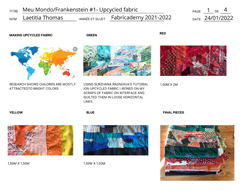
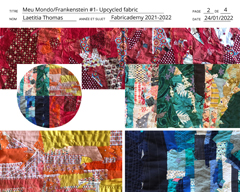

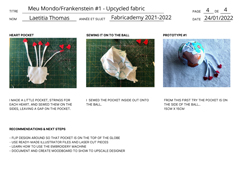
I have found these tutorials and templates on how to make round balls. From these I decided to go for the 6 "orange peel template".
- Orange peel fabric ball pattern
- Pentagon fabric ball pattern
Here is my first attempt of the AI file I'll use to laser cut and embroider my fabrics

Feedback from Frankenstein #1¶
Assembly instructions¶
Continents and base
- separate each “orange peels” as it will make cleaner assembly
- shrink continents to allow for ¼” seam allowance
- make continent AI file to be ready for 18/02/22
Pouch of Hearts - make hearts bigger and laser cut - see if hearts can be fused with laser machine or look for glue options. - mark where the heart pouch goes - make strings for hearts with recouvreuse using “fil mousse” to allow for stretchiness of fabric
Assembly - start with two orange peels and assemble the heart pouch on directly. - the ball needs to be sewed with a serger, because that works better with jersey.
Notes - linen will not allow the ball to bounce
Next steps - Buy wool from Laurent Saugues - get training on the 17th on Embroidery machine - laser cut and embroider pieces on the 18th at the Casemate - Assemble 3 prototypes using professional machines on the 19th
Frankenstein 2 using the laser cutting and embroidery machines¶
- create file in Illustrator. The biggest size of the embroidery frame is 360 X 200 mm, therefore the orange peel pattern needs to be separated in 2 (3 orange peels per frame), and turned at 45° angle, to follow the grain of the fabric. Make sure to put ½ inch seam allowance between each peel.
- Export Illustrator file into wmf or emf.
- Make sure to keep Illustrator file open to check the size.
Embroidery and appliqué
The first try was to appliqué the fabric. Which meant cutting the fabric using pelican scissors, after the embroidery machine made the contour of each continent. This requires precision, and I made made holes in my sample.
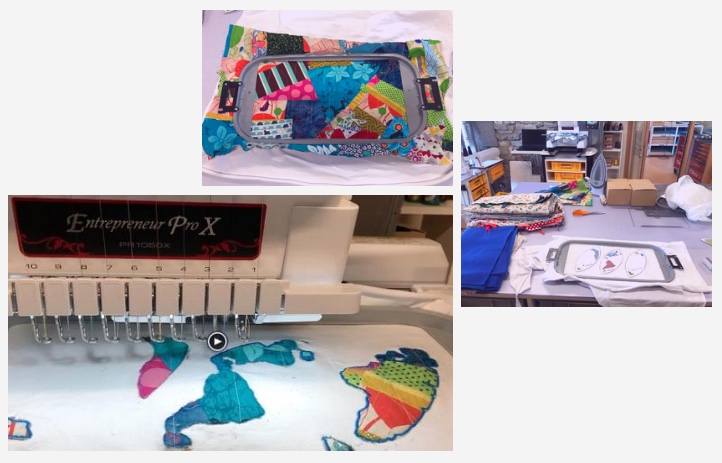
Laser cut embroidery and appliqué
Then I tried to laser cut the continents and then glue them on the embroidery piece. Switching from Illustrator, to svg, to wmf, to pes files shifted the size of my pieces, so they weren’t precisely the same size. I need to do some more finetuning.
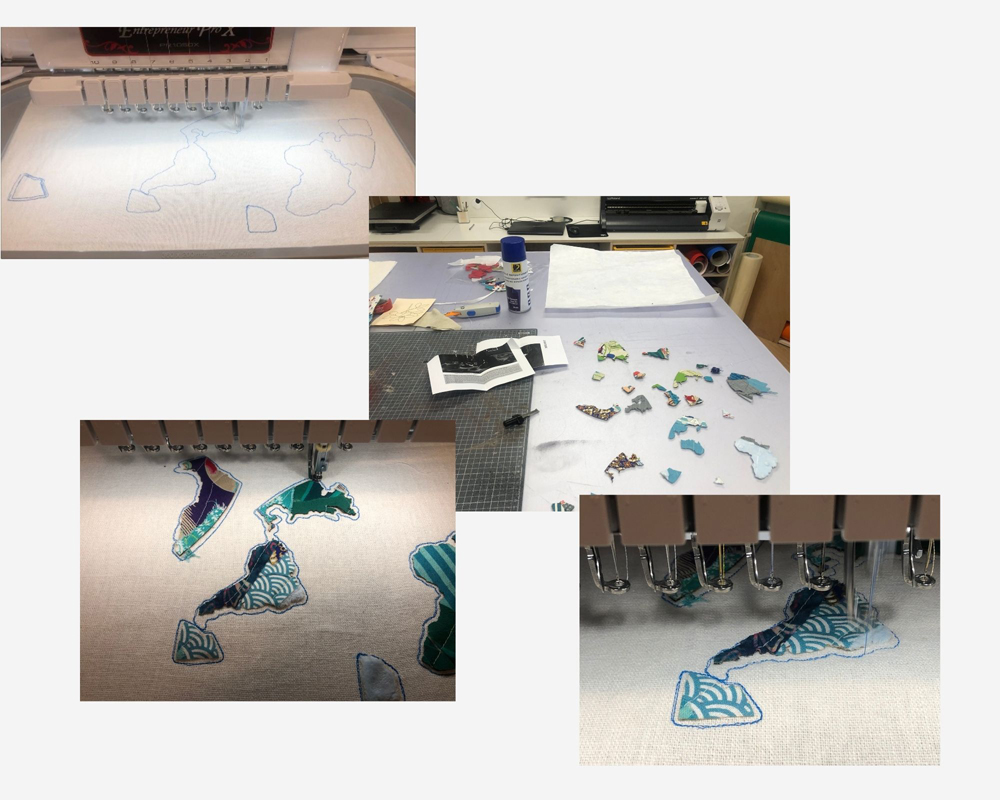
Heart pouch assembly
Initially I had sewn two pieces together with my home sewing machine. The result was untidy. So I tried to laser-cut heart shapes. Sewed one on a strap, and then used iron-on double interface to glue the other heart on.


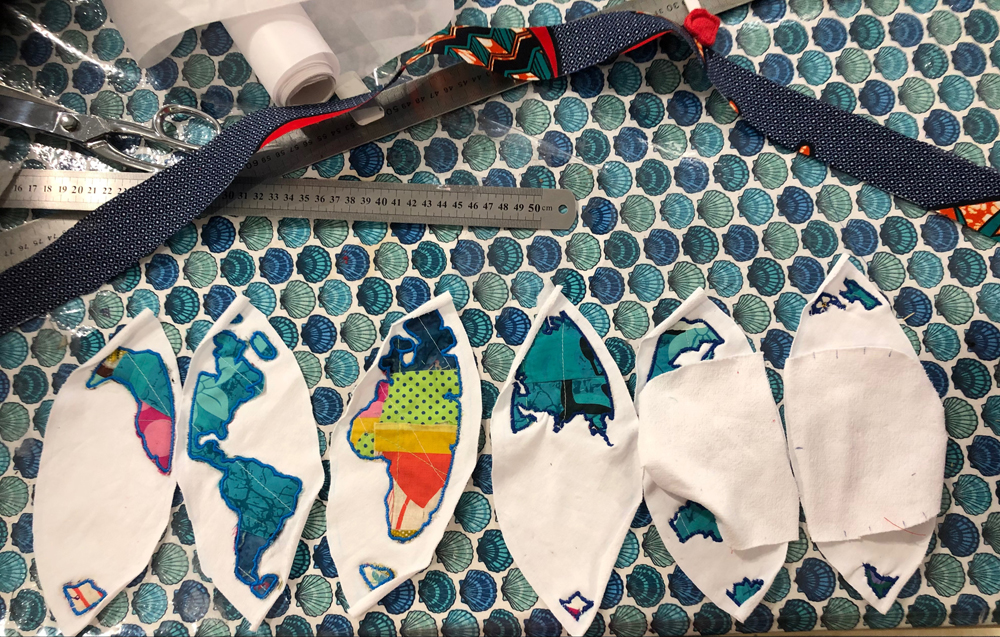
For cleaner results, I assembled the heart pouch first on the orange peels.
Midterm Global review presentation¶
Final presentation¶
Final images¶


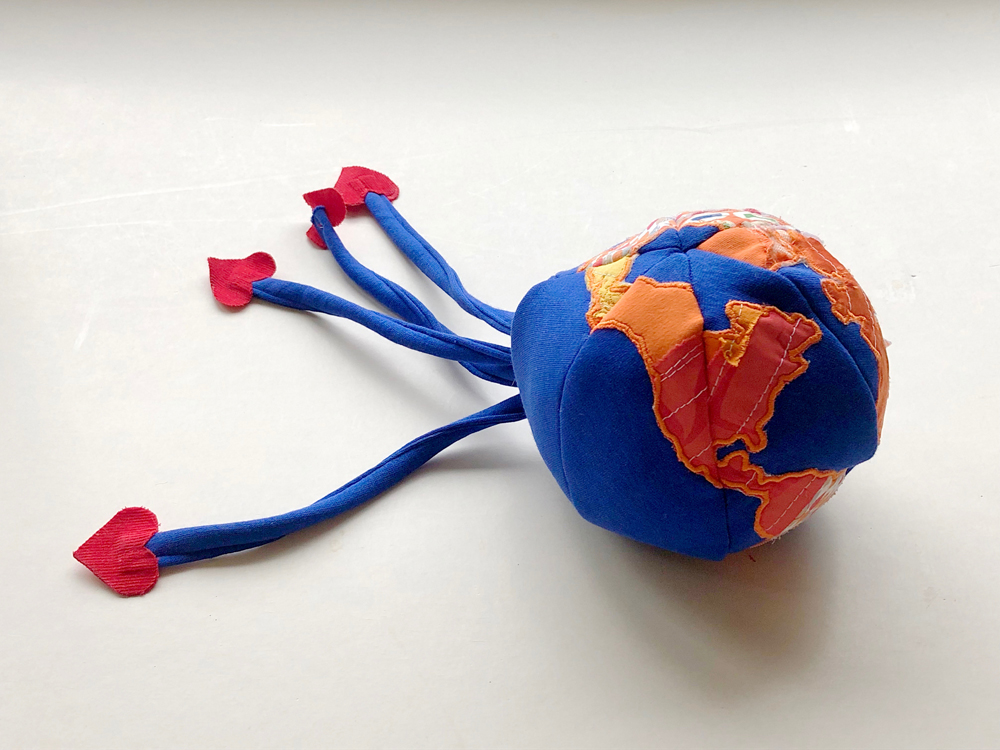
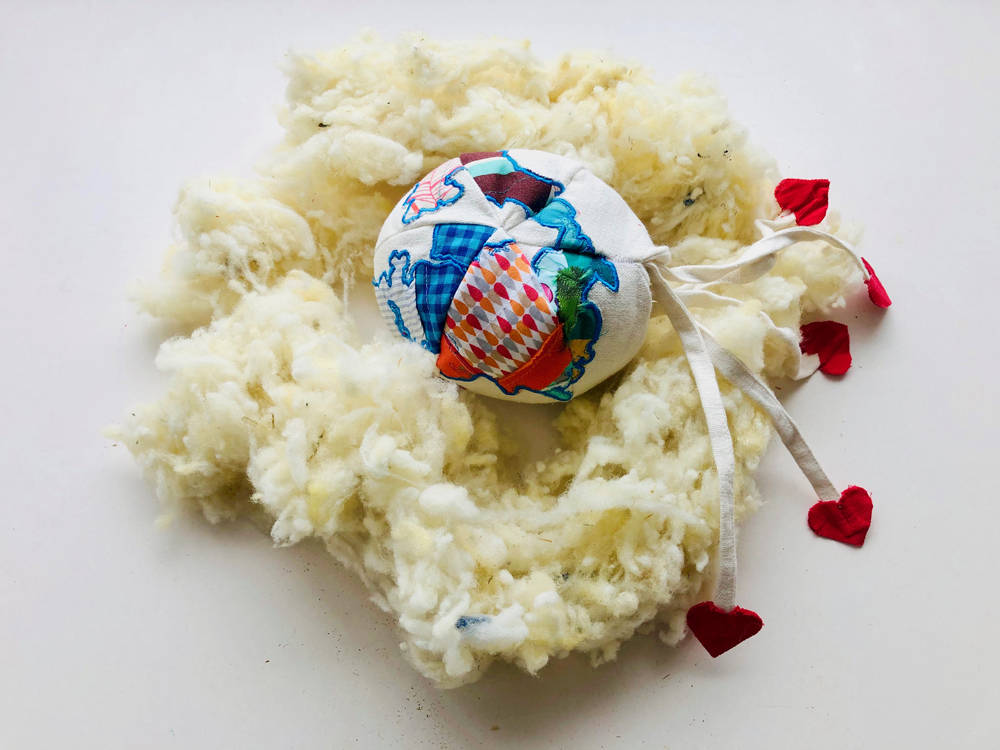
Design files¶
Here are the links to my design files:
Embroidery file using the PE Design software
Heart file
Useful links¶
- [Kristi Kuusk Crafting sustainable Smart Textile Services ](http://www.kristikuusk.com/?p=601
- Embroidery QR codes
- Make your own QR code
- QR code
- Toys, plastic and circular economy
- Changing the World toy by toy
